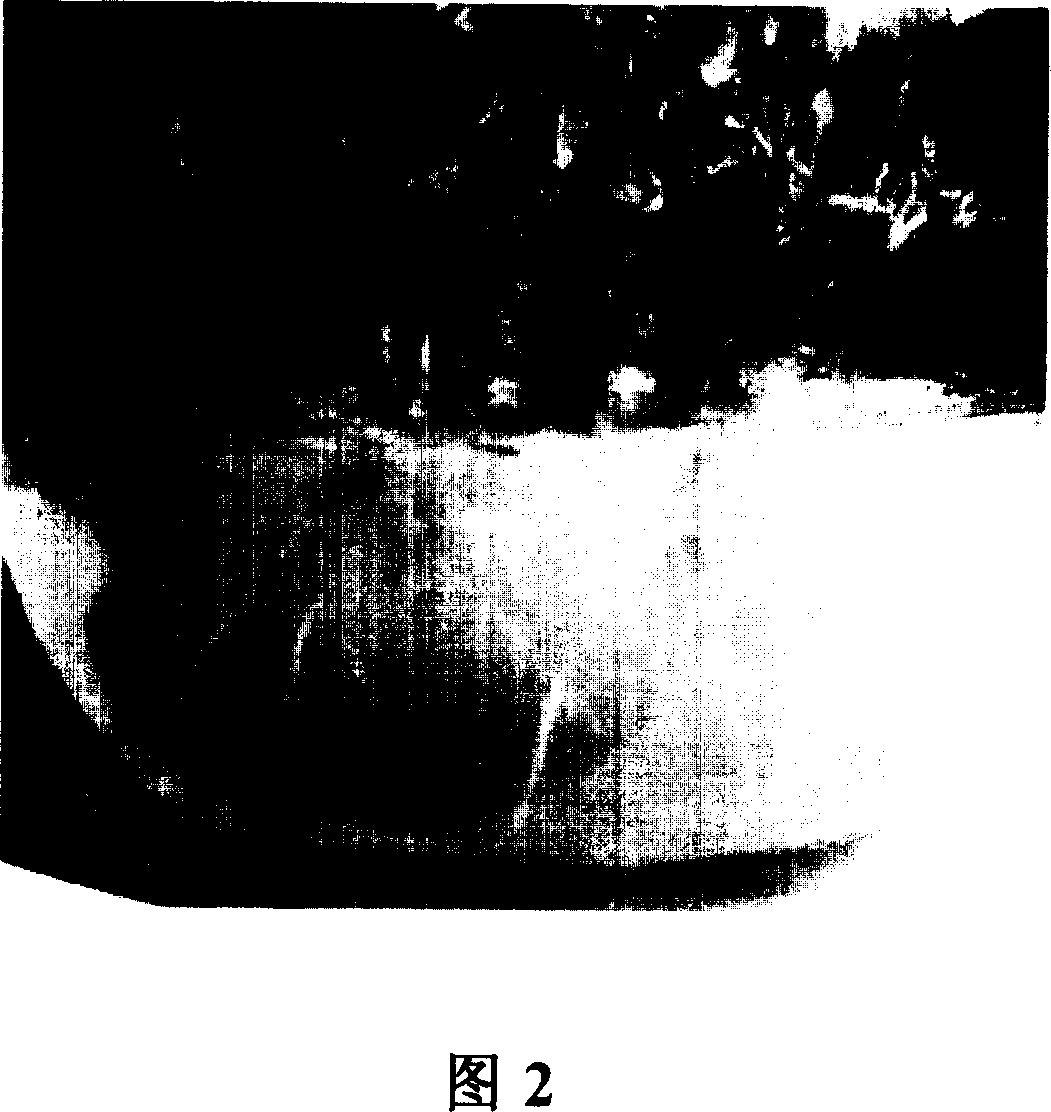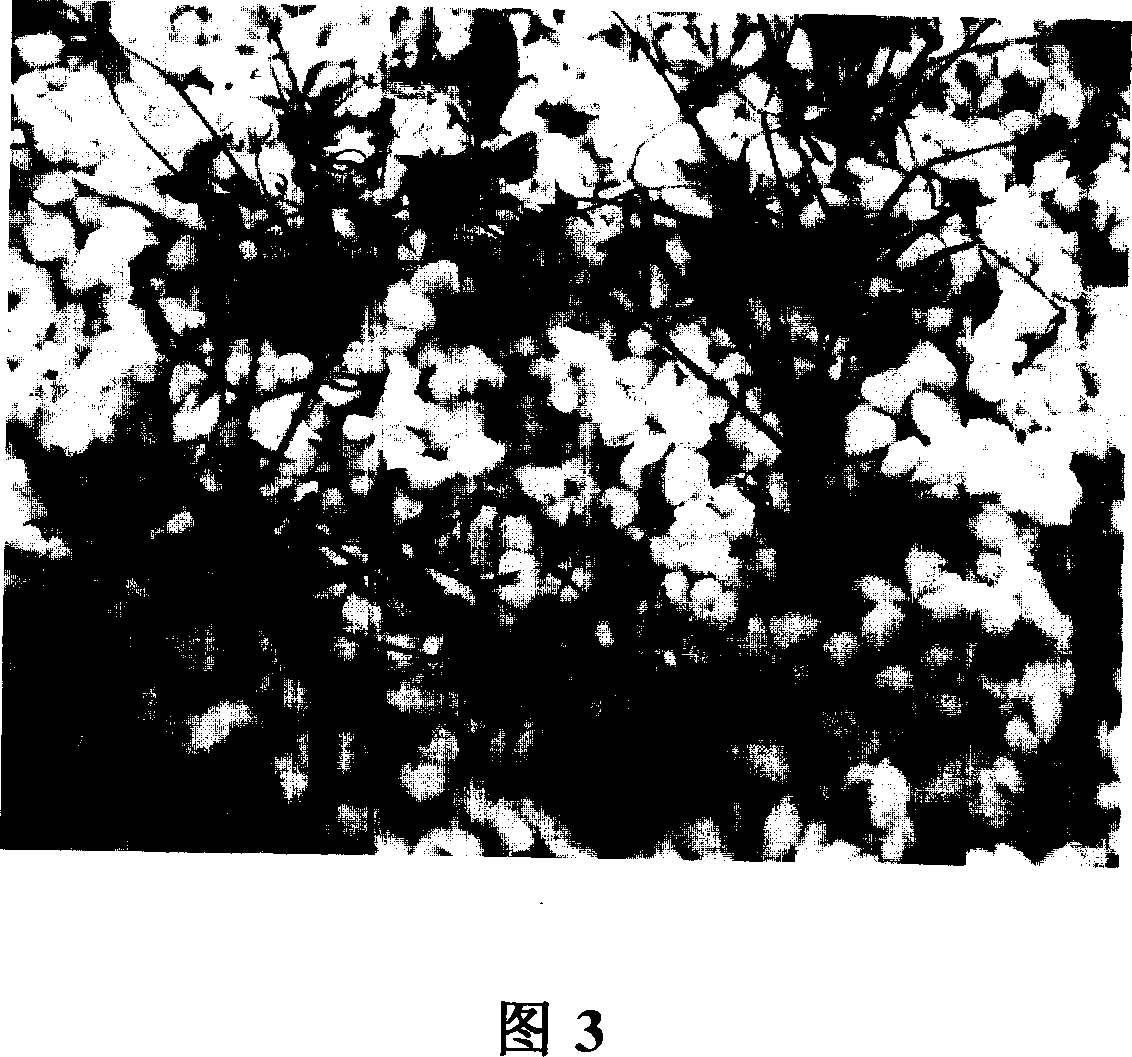Fast breeding system for flame nandina
A flame Nandina, fast technology, applied in plant cells, horticulture, botanical equipment and methods, etc., can solve problems such as slow speed, difficult cutting, thin branches, etc., to improve economic benefits and meet market needs.
- Summary
- Abstract
- Description
- Claims
- Application Information
AI Technical Summary
Problems solved by technology
Method used
Image
Examples
Embodiment 1
[0045] Culture establishment
[0046] 1. Materials
[0047] The test materials came from France, a new species of ornamental tree species, Flaming Nandina.
[0048] 2. Method
[0049] (1) Cut off the branches of the year, and use a small brush to rinse the material under tap water. On the ultra-clean workbench, first place it in 70% ethanol for 30 seconds, and then rinse it with 0.1% HgCl 2 Soak for 5-7 minutes, then rinse with sterile distilled water 3-4 times.
[0050] (2) Under aseptic conditions, cut out 0.1-1.0 cm shoot tips or stem segments with buds and inoculate them on the starting medium.
[0051] (3) WP medium was used as the basic medium, 0.6% agar powder was solidified, the pH was 5.2, the carbon source was 2% commercially available white granulated sugar, the culture temperature was 25°C, and the light was 9-10 hours per day, and the light intensity was 1000lx.
[0052] (4) After 4 weeks, when the height of the new shoot reaches more than 1.0 cm, cut it into ...
Embodiment 2
[0054] proliferation of propagules
[0055] (1) The proliferation medium of the explant uses the WP basic medium and improves it: delete the copper sulfate (CuSO4) in the WP basic medium 4 .5H 2 O), adding zinc sulfate (ZnSO 4 .7H 2 O) dosage, additional 6-benzylaminopurine 1.0mg / L, the differentiation of flame Nandina stem section is better than mediums such as WH, B5 and MS.
[0056] (2) Proliferation culture once every 20 to 25 days, after 2 to 3 consecutive subcultures, use improved WP+6-benzylaminopurine 0.5mg / L+ indolebutyric acid 0.1mg / L for strong seedling culture to reduce For thin and weak seedlings, and so on, the two mediums are used alternately.
[0057] (3) The content of sugar in the improved WP medium was increased from 2% to 3% of the original WP medium, pH 5.8 instead of pH 5.2, and the culture conditions such as culture temperature, light time and light intensity were the same as above. After 30 days of culture, the reproduction coefficient of the expla...
Embodiment 3
[0060] root regeneration
[0061] (1) Induction start-up stage: according to the development degree of flame nandina xylem, select 1.4-1.6cm branches as cuttings and first culture them in WP "root differentiation medium" containing auxin 1 / 2 for 1-3 weeks. Plants treated with hormones were directly transplanted into the rooting medium as the control.
[0062] (2) Root elongation stage: transfer to hormone-free 1 / 2 improved WP "root development medium", which can effectively prevent the formation of callus, and avoid the problems of easy broken roots and low survival rate of seedlings during transplanting. After 3 weeks, the rooting frequency was counted.
[0063] (3) In the flame Nandina rooting medium, the carbon source concentration was reduced from the original 3% to 1.5%, and the wild Nandina was investigated to find that its root system grew well in weakly alkaline soil, so the pH was adjusted from 5.8 of the differentiation medium to 6.7 to 7.0 environment, the third s...
PUM
| Property | Measurement | Unit |
|---|---|---|
| concentration | aaaaa | aaaaa |
Abstract
Description
Claims
Application Information
 Login to View More
Login to View More - R&D
- Intellectual Property
- Life Sciences
- Materials
- Tech Scout
- Unparalleled Data Quality
- Higher Quality Content
- 60% Fewer Hallucinations
Browse by: Latest US Patents, China's latest patents, Technical Efficacy Thesaurus, Application Domain, Technology Topic, Popular Technical Reports.
© 2025 PatSnap. All rights reserved.Legal|Privacy policy|Modern Slavery Act Transparency Statement|Sitemap|About US| Contact US: help@patsnap.com



